In my historical series about Moorish Spain I mention a number of small towns in Andalusia which have played their own part in the history of the region, and I thought you might be interested to know a bit more about them and maybe visit them one day.
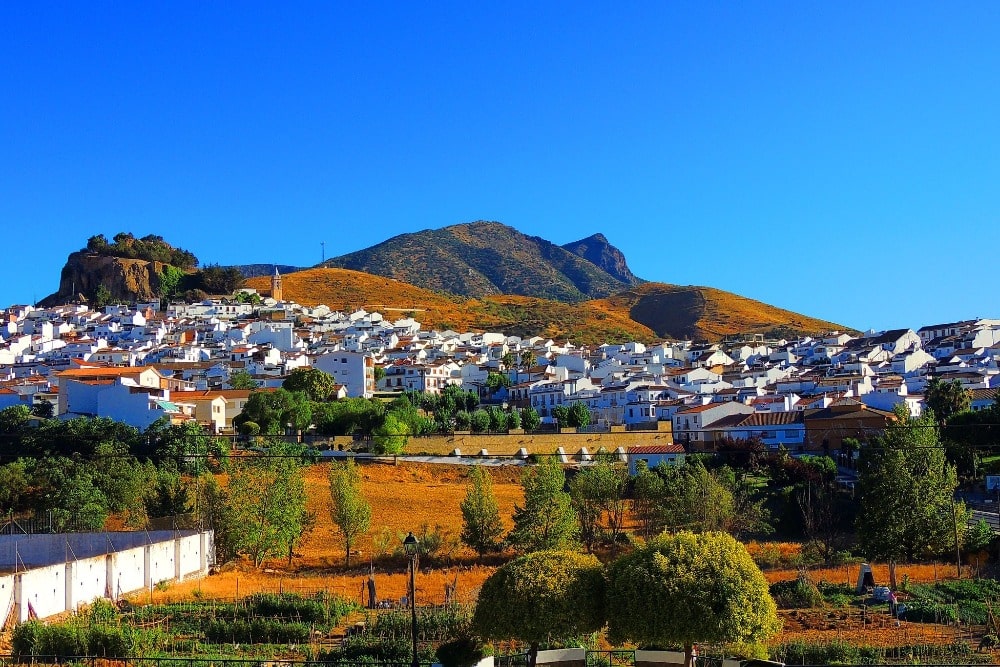
For example the town of ARDALES features a lot in both The Shining City and The Ring of Flames, (Al-Andalus trilogy) as it is the place where Qasim and his family lived before they moved to Madinat al-Zahra. It was also the place they escaped to when the city of Córdoba fell to the Berber armies in 1013 AD.
“He had been a potter before he joined ibn Hafsun’s rebellion, working alongside his father in a small town, high above the green and fertile Guadalhorce valley. In those days the country was in a state of turmoil; the Sultan’s rule was constantly challenged by a succession of princelings eager to usurp him. Omar ibn Hafsun had been one of them. The renegade had come to the area with his band of followers and built a fortress at Bobastro, only an Arab mile from Qasim’s home in Ardales. He told everyone that he was going to build a better world, an independent kingdom of the Mullawads, here in al-Andalus and he would be their king. He was tall, handsome and charismatic. Everyone believed him. They flocked to join his army and Qasim too had been swept up by the enthusiasm of the man; he immediately left his work as a potter to join him.”
(Extract from The Shining City)
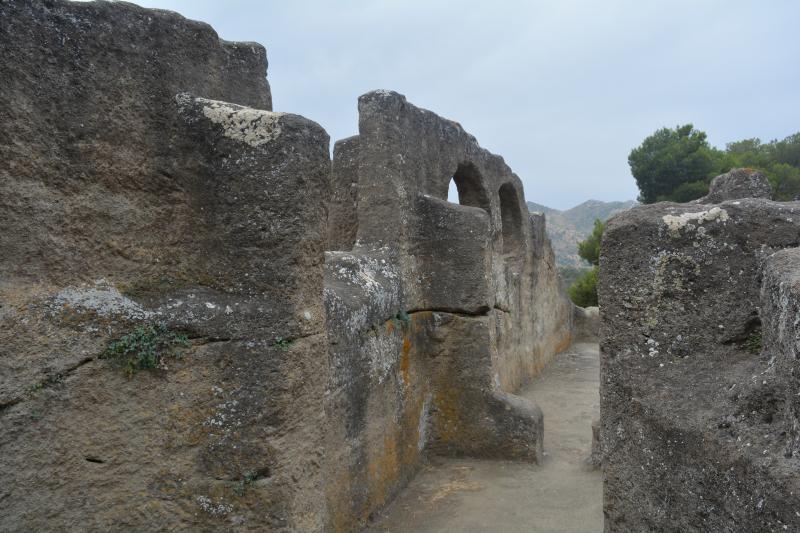
Ardales is a small mountain town situated at the crossroads of Ronda, Antequera and the Guadalhorce Valley. As such it lay on an important thoroughfare for trade and the movement of troops. Its fortifications date back to the Celtiberians, the people who occupied the land before the Romans and even the Phoenicians. Part of the town’s heritage is the Roman castle of Peña de Ardales. Although the town had always been of strategic importance it came into prominence in the 9th century, when the rebel Omar Ibn Hafsun incited the Muwallads and Mozarabs to rebel against the Moorish ruler of the time, Abd al-Rahman III. Ibn Hafsun occupied the Roman castle of Bobastro and constructed a Mozarab church inside it. Today the castle is in ruins.
Note: The Muwallads were a mixture of Arab, Berber and Iberian blood. Mostly the descendants of the Arab invaders who married the local Iberian women. The Mozarabs were Christians who had adopted the Arab way of life.
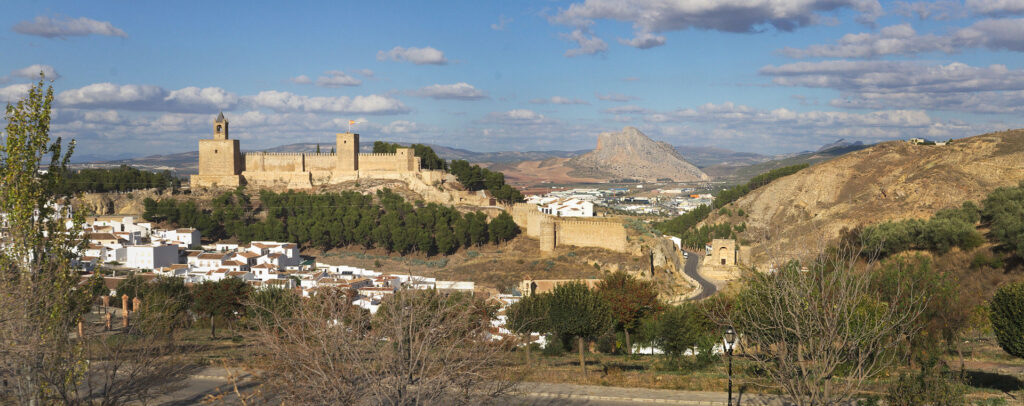
ANTEQUERA is a far larger town than Ardales, and features in my al-Andalus series because it lies half-way between Málaga and Córdoba. In The Shining City, when Qasim tells his son Omar that he must leave Madinat al-Zahra forever, Omar joins a caravan of nomads heading for North Africa. They spend their first night camped outside Antequera (or Medina Antaquira as it was called then) and he looks across at the Peña de los Enamorados (the Lover’s Rock) and his guilt over what he has done to his family overwhelms him.
“From where they were camped they could see for miles across the golden plain of Medina Antaquera, its wide expanse broken only by the occasional outcrop of rock. There was no corn now; it had been harvested some months ago but patches of stubble remained where the plough had passed them by.
‘See that hill there?’ one of the Africans said, taking a deep draught from the jug of camels’ milk. ‘The one that looks a sleeping man? Some say that, long ago, a djinn terrorised this town and, when he was caught, they imprisoned him inside the hill. He has lain there ever since.’
‘Well I heard that two lovers, one a Muslim merchant and the other a Christian girl, threw themselves to their deaths from the top of the rock and now their bones lie beneath it,’ said another.”
Extract from The Shining City.

Like Ardales, the town of Antequera has been of strategic and economic importance since the 6th century BC. Today it is known as the Heart of Andalusia because of its position between Málaga, Granada, Córdoba and Seville. Situated at almost six hundred metres above sea level, it is surrounded by rich fertile land. Having been occupied by prehistoric Iberians, Carthaginians, Romans, Vandals and Visigoths, it fell to the Muslim invaders in 716 AD and became part of the Omayyad caliphate. It remained in Moorish hands until 1410 AD when the city finally capitulated to the Christian armies after four months of siege.
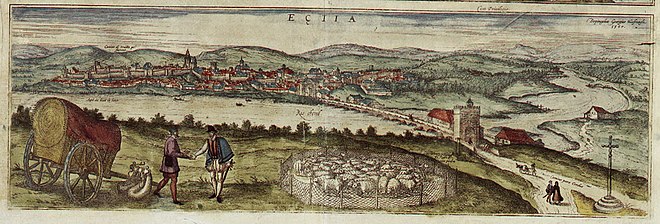
ÉCIJA and CARMONA are towns which have also had eventful histories due to their location halfway between the rival cities of Seville (Isbiliya) and Córdoba (Qurtubah). They feature in The City of Dreams trilogy in the 11th century by which time Moorish Spain had fragmented into a number of small princedoms called taifas. Seville was the largest of these taifas and its ruler’s ambition was to conquer all the smaller ones, including Carmona (Qarmuña) and Écija.
“If he and his allies joined forces against Isbiliya then their ruler, Abbad I, stood no chance; even with the support of Qarmuña his armies would be greatly outnumbered. The previously undefeated Isbiliya would at last learn what it was like to be the vanquished party.
This wasn’t the first time armies had fought over Écija. The town, which according to the historians, predated even the Romans, had long been the source of disputes because of its strategic position. It lay in a wide, fertile plain, half-way between the cities of Qurtubah and Isbiliya, on an ancient Roman road, the Via Augusta which stretched from Qadis in the south across the entire Iberian peninsula, linking all the Muslim taifas, from Arcos on the Dark Sea to Tortosa on the frontier with Christian Spain. Currently Écija was within the boundaries of Qarmuña, but everyone around the table today knew that this campaign was nothing to do with occupying Écija; it was about defeating Abbad I and stopping his expansionist plans. Even Qarmuña must realise that.
‘General Rashad, I want you to send someone to Qarmuña, to the court of Muhammad ibn Abd Allah to find out what he is planning to do. There is no way he can remain neutral in this fight. He has to decide if he is with us or against us. Tell him we can come to an agreement about Écija, if that is what’s worrying him. I have no plans to station troops there to defend a town that is of little use to me. Why would I? And I can’t see it being of any interest to our allies in Badajoz or Álmeria; they are both too far away.’
He looked across at them and saw that he was correct in his assumption. But what about Garnata. That was much closer. ‘Ibn Nagrillas? What are your feelings on Écija?’
‘Your Majesty, Garnata has no plans to expand her territory. If you wish to use Écija as a bargaining point with the sultan of Qarmuña, I am sure that I can speak for our ruler, Badis ben Habus, when I say that we are in complete agreement with you. Our objective, as is everyone’s here, is to curtail the ambitions of Abbad I. Something we have to do whichever way we can, before he has all of al-Andalus under his control.’
(Extract from The Pirate)
Conquered by the Moors in 711 AD, after six months of fighting, ÉCIJA remained in Muslim hands until 1240 AD when it became a border town in the hands of the Christians. The importance of the town lay in two main factors, water and agriculture; the river Genil flows through the town and it is a rich agricultural area which provided food for the whole area, including the major cities of Córdoba and Seville.
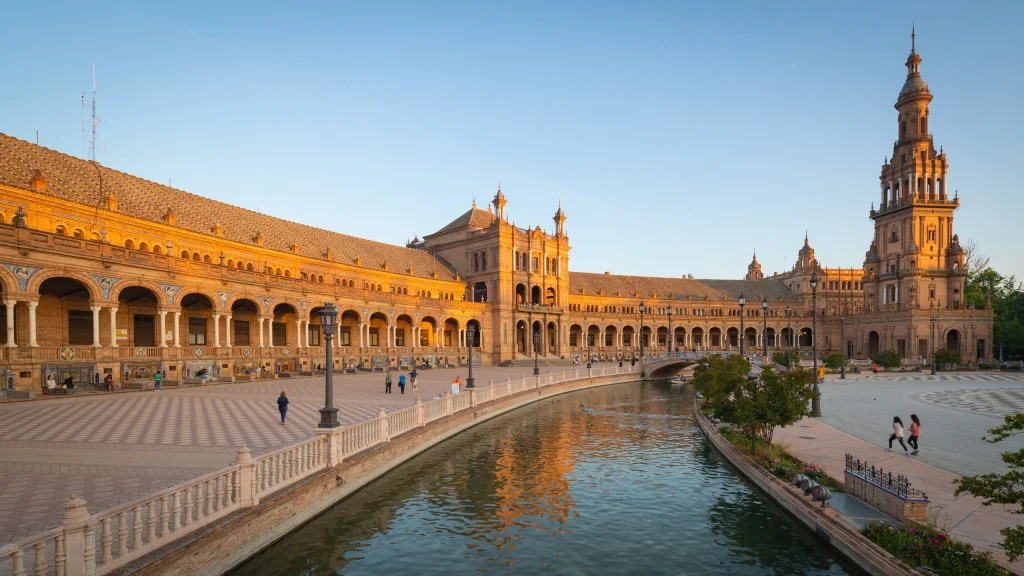
CARMONA (Qarmuña) was a well defended town, built on a high ridge overlooking the plains near Córdoba and with the Sierra Morena to its north. It was a prosperous town under the Moors, trading in olive oil, wine, grain and cattle.
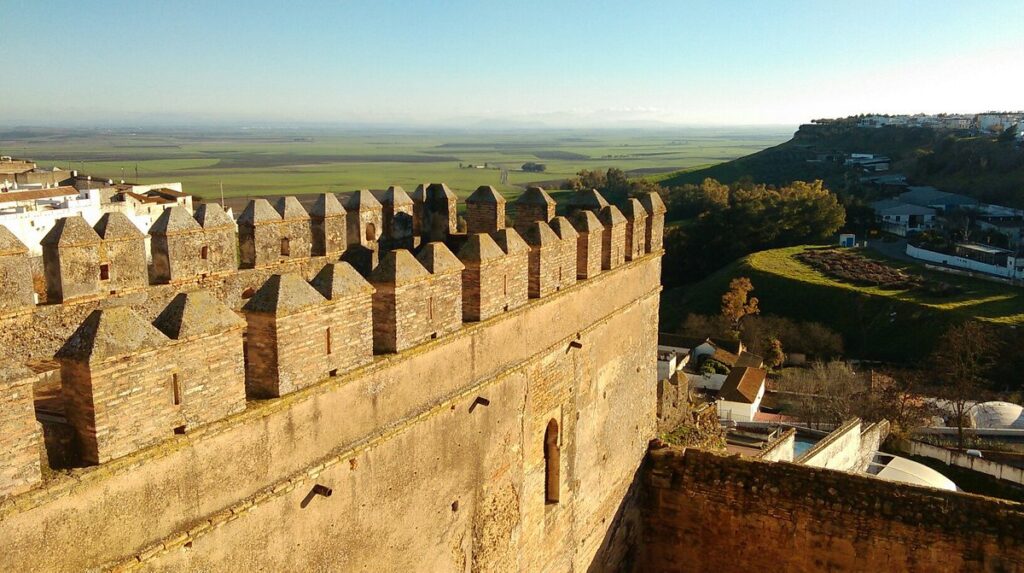
In Moorish Spain, all these smaller towns had certain things in common; they were located in places that were easy to defend, they had access to fertile land and grew food for the neighbouring cities, and they controlled important trade routes.
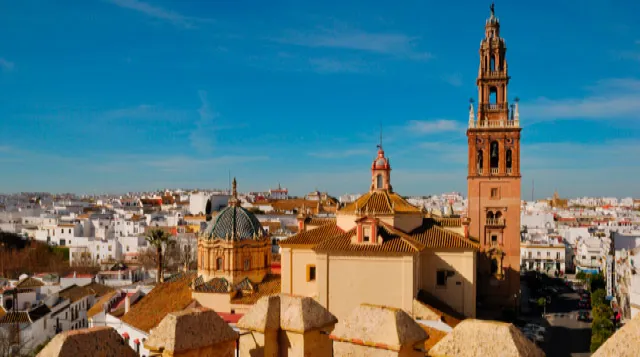
The autonomous community of Andalusia has many such towns as those I’ve mentioned, Ronda for example and Arcos de la Frontera, all of which played an important role in the history of Spain.

3 Responses
brilliant to read…thanks for
sorry I was unable to finish the comment, but, thanks for the wonderful information…
Glad you enjoyed it.